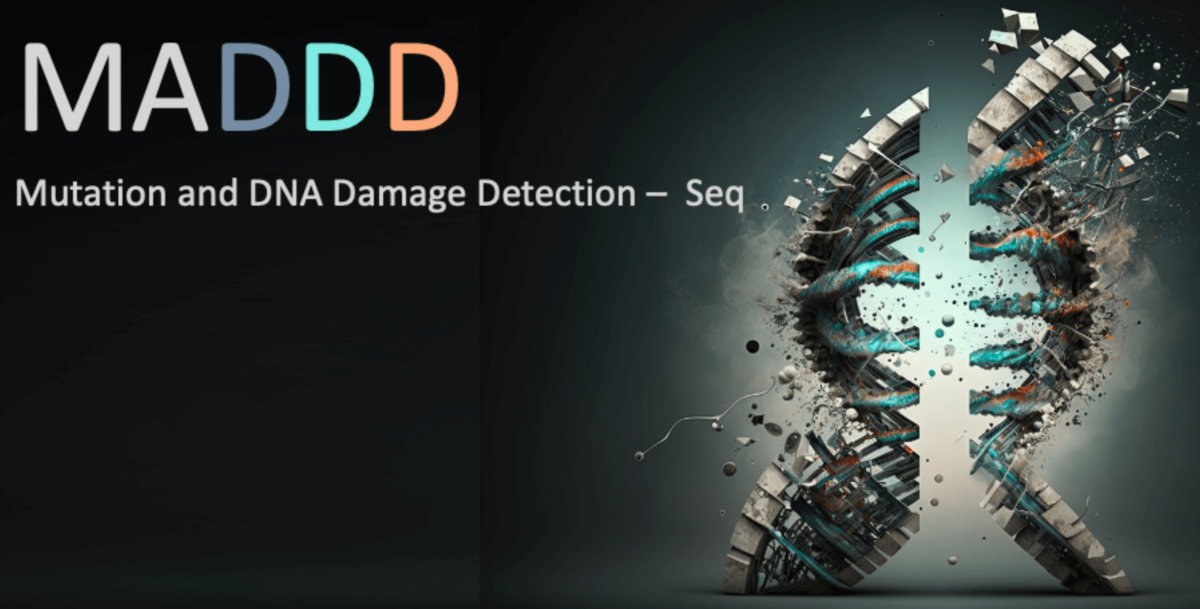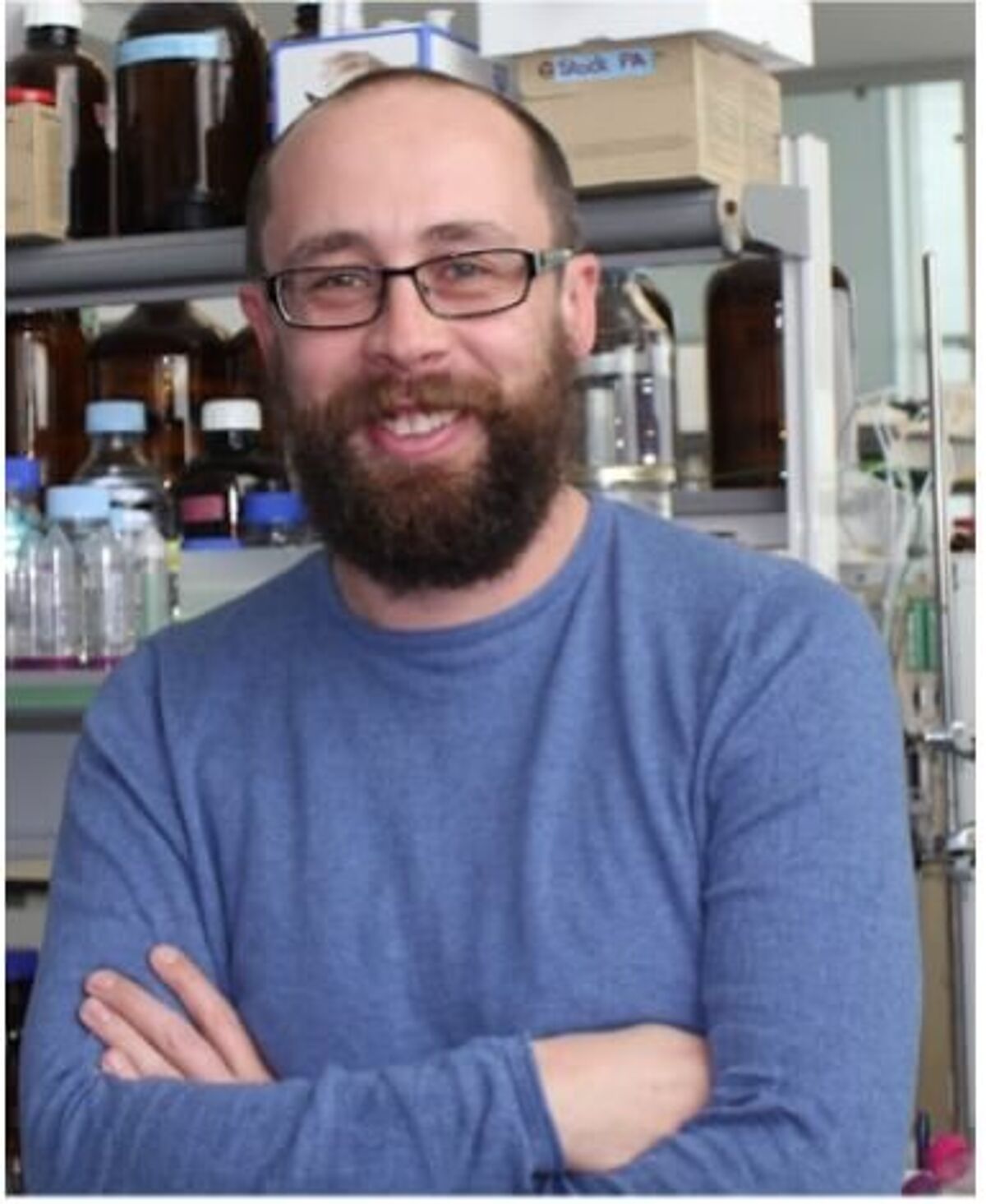Introduction: The Problem of Detecting DNA Damage and Mutations
The misrepair of DNA damage induced by exposure to various harmful agents can prompt the fixation of mutations that cause significant problems to human health; therefore, simultaneously detecting DNA damage and mutations in a single assay has the potential to deepen our understanding of mutagenic processes and support the development of preventative/treatment therapeutic strategies. Mutations play a critical role in human aging and diseases such as cancer; however, mutations are rare, display a random distribution, and remain difficult to detect. Furthermore, detecting DNA damage faces related challenges in addition to the problem of lesion heterogeneity (Mingard et al.); for example, current technologies face significant challenges when attempting to discriminate smaller-sized DNA damage lesions, which support translesion synthesis during DNA synthesis and the fixation of mutations.

Don’t Get Even; Get MADDD-Seq!
In a technological step towards solving these vexing problems, researchers headed by Jason H. Bielas (University of Washington) recently reported the development of the “Mutation and DNA Damage Detection-Seq” or MADDD-Seq assay in a recent preprint article, which simultaneously detects DNA damage and mutations within a single assay and a single sample in any organism of choice. MADDD-Seq represents the combination of a previously described double barcoding strategy that detects mutations with high sensitivity (Gregory et al.) with a novel bio-informatic pipeline that employs the information encoded by modified barcodes to identify and localize mutations and DNA damage in the same dataset to a single base on a single DNA strand. MADDD-Seq takes advantage of error-prone translesion synthesis during library amplification to detect DNA damage; therefore, this technique holds immense potential in detecting small regions of DNA damage that drive mutagenesis.
MADDD-Seq: Proof-of-Principal Evaluations
Vermulst and Colleagues began by conducting proof-of-principle experiments that demonstrated how MADDD-Seq efficiently distinguished potentially mutagenic damage on synthetic double-stranded oligonucleotides. Next, the authors exposed DNA isolated from the budding yeast Saccharomyces cerevisiae to the DNA-damaging agent methylnitronitrosoguanidine (MNNG), which adds alkyl groups to the O6 of guanine and O4 of thymine, with O6-methyl guanine (O6-me-G) known to be mutagenic (Gerson, 2004 and Teuber-Hanselmann et al.). Encouragingly, MADDD-Seq reported a substantial increase in the number of O6-meG lesions after MNNG exposure in the nuclear and mitochondrial genomes. Interestingly, a comparison between nuclear and mitochondrial DNA revealed that, even after extensive MNNG-induced damage, DNA damage did not persist for extended periods of time in mitochondrial DNA, even in the absence of a comprehensive mitochondrial DNA repair system (Mandavilli et al.), while mutations rarely arose. Overall, these findings provided evidence for the genome-wide scope of MADDD-Seq.
The authors next evaluated the ability of MADDD-Seq to simultaneously detect DNA damage and mutations within a single assay by exposing rapidly dividing yeast cells to MNNG and following the consequences over a day. O6-meG lesions significantly increased immediately after exposure, covering the entire genome in an unbiased manner, followed by a rapid decline over the subsequent 24 hours. Analysis of the dataset with the bioinformatic pipeline designed to detect mutations revealed a rapid increase in mutation frequency for the day after MNNG exposure; overall, MADDD-Seq suggested that 9% of O6-meG lesions became fixed into mutations.
MADDD-Seq: Looking to Current and Future Applications
The authors next explored the possible applications of MADDD-Seq in DNA damage repair and mutation research. The deletion of the gene coding the DNA repair protein MGT1, the yeast homolog of MGMT (Xiao and Fontanie), served to mimic the hypermethylation of the MGMT gene (and the associated loss of expression) observed in brain tumors; however, this loss did not alter the number of O6-meG lesions detected by MADDD-Seq after MNNG exposure to proliferating yeast cells. Interestingly, the analysis of mutations provided distinct results – resulting DNA damage converted into mutations at a higher rate in MGT-deficient cells, with 45% of O6-meG lesions fixed into mutations. The authors also evaluated MNNG exposure in non-dividing wild-type yeast cells; this analysis aimed to mimic the hypermethylation of the MGMT gene promoter observed in the neurons of female Alzheimer’s patients (Chung et al.). Overall, non-dividing wild-type cells still rapidly removed MNNG-induced DNA damage (suggesting that proliferative state does not affect repair); however, the percentage of O6-meG lesions fixed into mutations decreased significantly.
Finally, the team noted the potential for resultant MADDD-Seq datasets to be “mined” for variables that alter the sensitivity of DNA sequences to potential mutagens, the pathways employed for DNA repair, or the propensity for damage to become fixed into mutations. Indeed, the authors reported the application of MADDD-Seq to identify DNA repair pathways potentially responsible for the clearance of DNA damage from the genome. Furthermore, MADDD-Seq datasets also aided in the identification of new variables that link DNA damage to mutations; to this end, the authors demonstrated how MADDD-Seq datasets allow for detailed observations that supported a critical description of the relationship between DNA damage, DNA repair, and mutagenesis.
Getting MADDD-Seq Gets the Job Done!
Overall, MADDD-Seq appears to solve problems and get the job done – this technique represents a sensitive means of simultaneously detecting DNA damage and associated mutations within a single assay from a single sample in a single reaction to provide insight into parameters that control disease risk. Indeed, the authors believe that MADDD-Seq will prove crucial for disease prognosis, tumor grading, and predicting treatment efficacy. Furthermore, detecting DNA damage and mutations within a single assay limits artifacts introduced via sample handling, batch effects, and/or user errors and requires a small amount of potentially precious samples, leaving them open to additional experiments in the future.
About the author

Stuart P. Atkinson, Ph.D.
Stuart was born and grew up in the idyllic town of Lanark (Scotland). He later studied biochemistry at the University of Strathclyde in Glasgow (Scotland) before gaining his Ph.D. in medical oncology; his thesis described the epigenetic regulation of the telomerase gene promoters in cancer cells. Following Post-doctoral stays in Newcastle (England) and Valencia (Spain) where his varied research aims included the exploration of epigenetics in embryonic and induced pluripotent stem cells, Stuart moved into project management and scientific writing/editing where his current interests include polymer chemistry, cancer research, regenerative medicine, and epigenetics. While not glued to his laptop, Stuart enjoys exploring the Spanish mountains and coastlines (and everywhere in between) and the food and drink that it provides!
Supplier

Active Motif
Active Motif offers all you need for researching epigenetics and gene regulation: from sonification devices to ChIP-Seq, CUT&Tag kits as well as validated antibodies.
